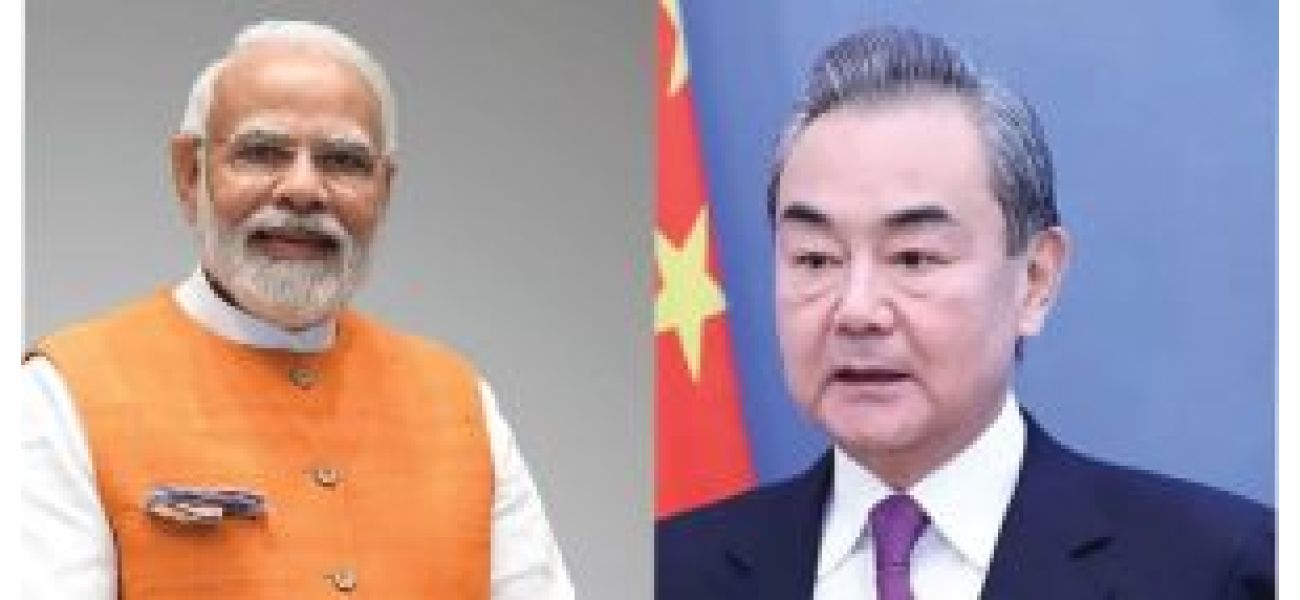"India and China are brothers"
India and China are currently experiencing positive and important interactions at the top level, as Prime Minister Narendra Modi met with China's top diplomat Wang Yi in Delhi. Modi praised the progress in improving the bilateral relationship after a long standoff.
August 26th 2025.

Recently, there was a significant meeting between the leaders of India and China, which marked a positive moment for their relationship. Prime Minister Narendra Modi and China's top diplomat and foreign minister, Wang Yi, met in New Delhi to discuss the progress made in improving bilateral ties. This comes after years of tension between the two nuclear-armed Asian powers. The timing of this meeting is crucial as both countries navigate a shifting global economy, brought about by the tariffs imposed by US President Donald Trump.
After their meeting, Prime Minister Modi took to social media to express his satisfaction with the "steady progress" made in their relationship. He also highlighted the importance of respecting each other's interests and sensitivities. In a reciprocal gesture, China's Ministry of Foreign Affairs stated that the two countries are on a "steady development track" and should continue to "trust and support" each other.
The rebuilding of India-China ties is significant, especially in light of the recent friction between India and the US. Trump's tariffs on India for purchasing Russian oil have strained their relationship, with the US viewing India as fueling Moscow's military machine. India is now realizing the risks of relying too heavily on the US and trying to appease Trump at the expense of diplomatic conventions. This also sheds light on India's lack of political preparedness to navigate the demands of global trade and business.
The US has strategically partnered with India to counter China's influence in Asia, evident in India's inclusion in the Quad security alliance with the US, Australia, and Japan. However, India's political thinking has been clouded, causing them to lose out on strategic partnerships. This has been a source of delight for the US, who has seen tensions between India and China escalate since the deadly clash in 2020 in the Galwan region. This has affected trade, diplomacy, and air travel, with both countries deploying a large number of security forces along the border. Despite this, there has been some progress made since then.
Wang's recent visit to India aimed to ease border tensions and strengthen ties between the two countries. Last year, India and China signed a pact on border patrols and withdrew additional forces from some border areas. Both countries continue to fortify their border by building roads and rail networks. Furthermore, there have been discussions to ease trade restrictions, movement of citizens, and visas for business people. China has also allowed Indian pilgrims to visit holy sites in Tibet, and both sides are working to restore direct flights. Last week, India's Foreign Ministry spokesman mentioned that they are in talks with China to restart trade through three points along their 3,488 km border. However, resolving the boundary issue between these two countries would require compromise at the highest political level.
During his visit, Wang also met with External Affairs Minister S Jaishankar and National Security Adviser Ajit Doval to discuss the disputed border in the Himalayan region. The Ministry of External Affairs stated that the meeting focused on "de-escalation, delimitation, and boundary affairs." Wang's conciliatory and friendly approach reflects China's new thinking to improve relations with India, which could benefit both countries, who are struggling with Trump's tariff war. However, Wang also acknowledged that the tensions between the two countries in the past few years have not been in the best interest of their people.
Given the complex history of India-China relations, it would be premature to speculate on China's motives for extending an olive branch to India. This is especially true after the recent Operation Sindoor, which revealed how Pakistan could withstand India's offensive with the help of Chinese military hardware and intelligence. At the same time, India needs to be careful not to rely too heavily on a powerful and unpredictable ally like the US, which could close doors to potential partnerships with other nations.
It is possible that China might use the current strained relations between India and the US to advance its own economic, military, and territorial ambitions. However, this does not mean that India should put all its eggs in one basket, as it did with the US. India needs to be cautious of China's statement of supporting India against Trump's tariffs and not solely rely on them as a partner in taking on the US's aggressive trade policies.
After their meeting, Prime Minister Modi took to social media to express his satisfaction with the "steady progress" made in their relationship. He also highlighted the importance of respecting each other's interests and sensitivities. In a reciprocal gesture, China's Ministry of Foreign Affairs stated that the two countries are on a "steady development track" and should continue to "trust and support" each other.
The rebuilding of India-China ties is significant, especially in light of the recent friction between India and the US. Trump's tariffs on India for purchasing Russian oil have strained their relationship, with the US viewing India as fueling Moscow's military machine. India is now realizing the risks of relying too heavily on the US and trying to appease Trump at the expense of diplomatic conventions. This also sheds light on India's lack of political preparedness to navigate the demands of global trade and business.
The US has strategically partnered with India to counter China's influence in Asia, evident in India's inclusion in the Quad security alliance with the US, Australia, and Japan. However, India's political thinking has been clouded, causing them to lose out on strategic partnerships. This has been a source of delight for the US, who has seen tensions between India and China escalate since the deadly clash in 2020 in the Galwan region. This has affected trade, diplomacy, and air travel, with both countries deploying a large number of security forces along the border. Despite this, there has been some progress made since then.
Wang's recent visit to India aimed to ease border tensions and strengthen ties between the two countries. Last year, India and China signed a pact on border patrols and withdrew additional forces from some border areas. Both countries continue to fortify their border by building roads and rail networks. Furthermore, there have been discussions to ease trade restrictions, movement of citizens, and visas for business people. China has also allowed Indian pilgrims to visit holy sites in Tibet, and both sides are working to restore direct flights. Last week, India's Foreign Ministry spokesman mentioned that they are in talks with China to restart trade through three points along their 3,488 km border. However, resolving the boundary issue between these two countries would require compromise at the highest political level.
During his visit, Wang also met with External Affairs Minister S Jaishankar and National Security Adviser Ajit Doval to discuss the disputed border in the Himalayan region. The Ministry of External Affairs stated that the meeting focused on "de-escalation, delimitation, and boundary affairs." Wang's conciliatory and friendly approach reflects China's new thinking to improve relations with India, which could benefit both countries, who are struggling with Trump's tariff war. However, Wang also acknowledged that the tensions between the two countries in the past few years have not been in the best interest of their people.
Given the complex history of India-China relations, it would be premature to speculate on China's motives for extending an olive branch to India. This is especially true after the recent Operation Sindoor, which revealed how Pakistan could withstand India's offensive with the help of Chinese military hardware and intelligence. At the same time, India needs to be careful not to rely too heavily on a powerful and unpredictable ally like the US, which could close doors to potential partnerships with other nations.
It is possible that China might use the current strained relations between India and the US to advance its own economic, military, and territorial ambitions. However, this does not mean that India should put all its eggs in one basket, as it did with the US. India needs to be cautious of China's statement of supporting India against Trump's tariffs and not solely rely on them as a partner in taking on the US's aggressive trade policies.
[This article has been trending online recently and has been generated with AI. Your feed is customized.]
[Generative AI is experimental.]
0
0
Submit Comment





